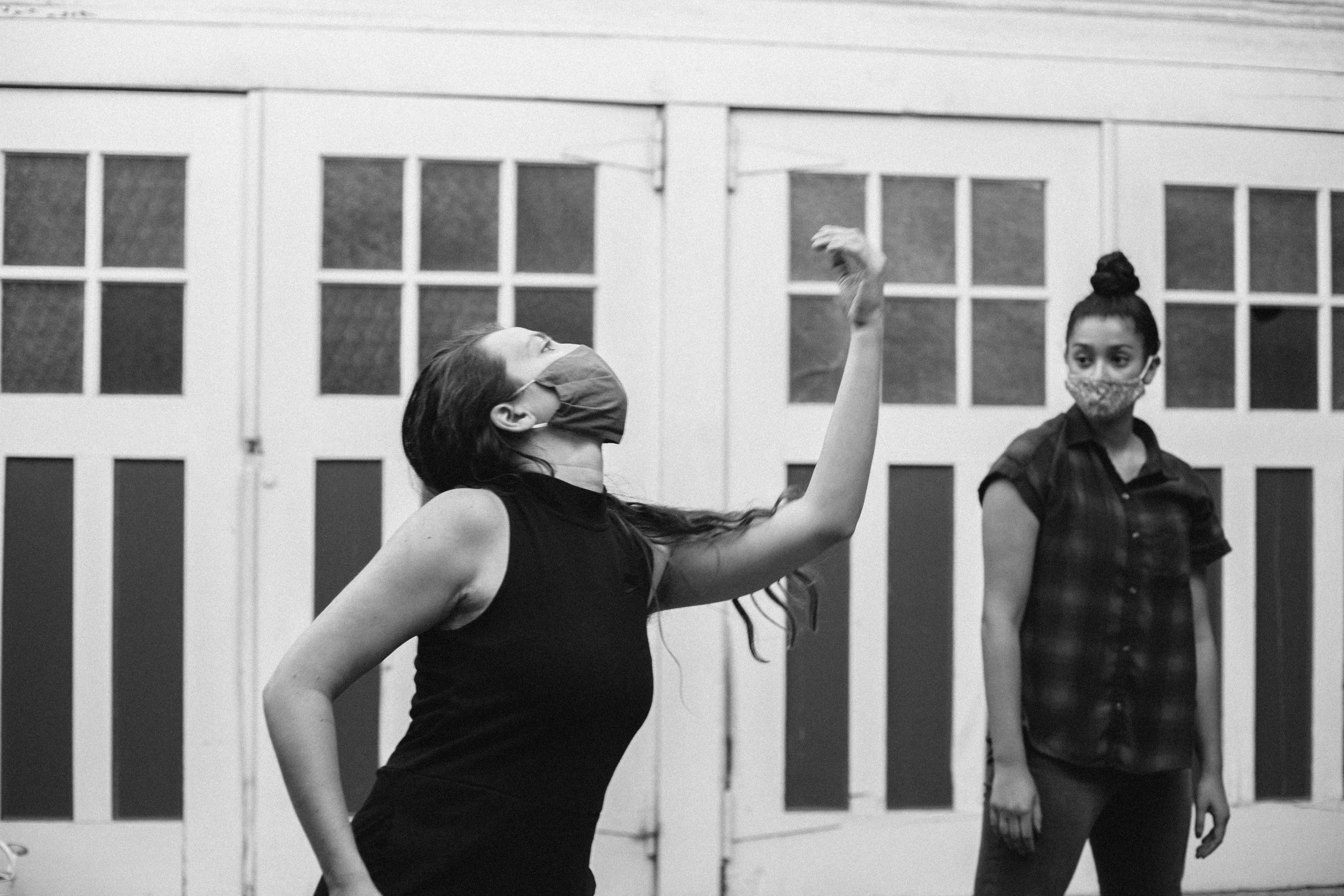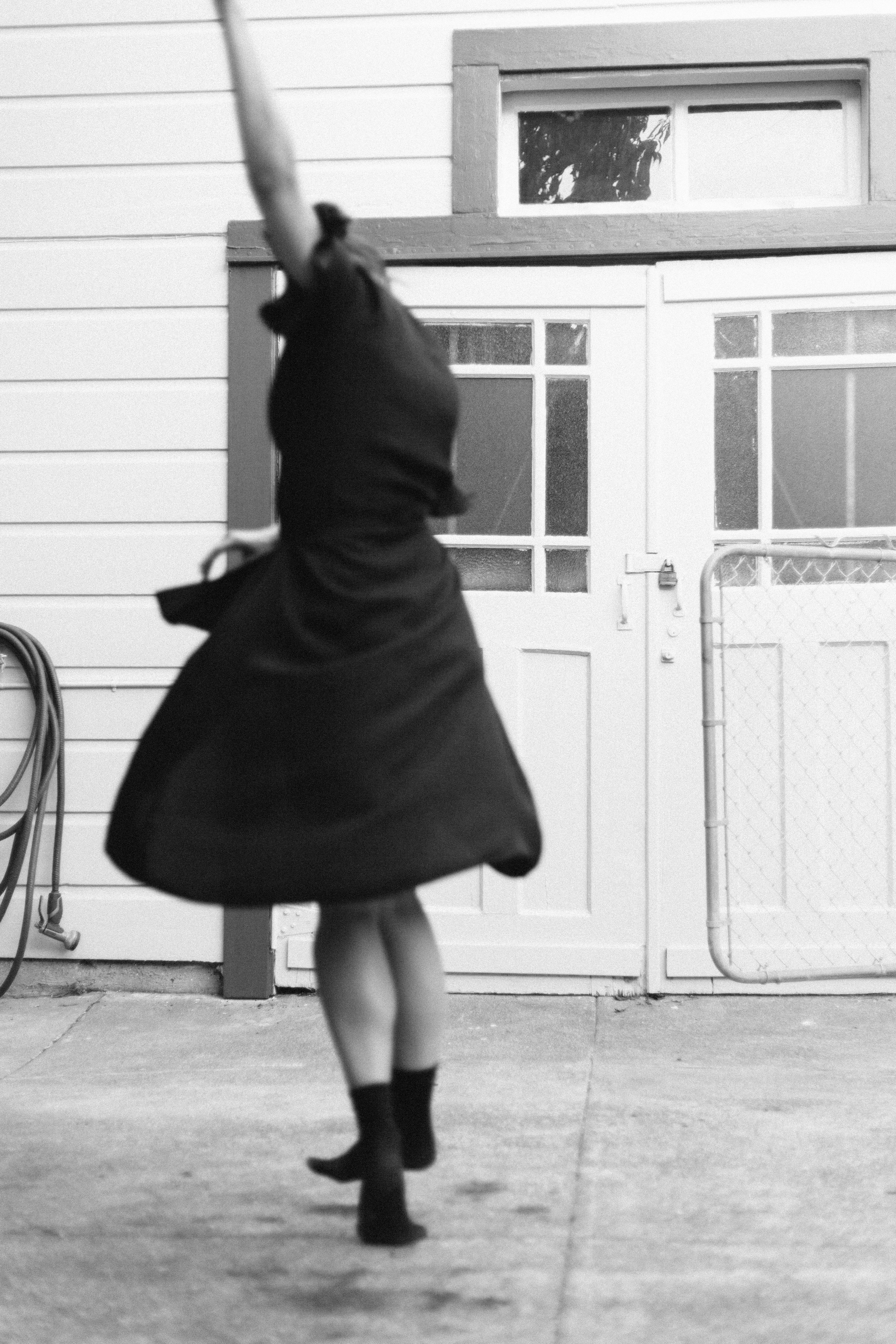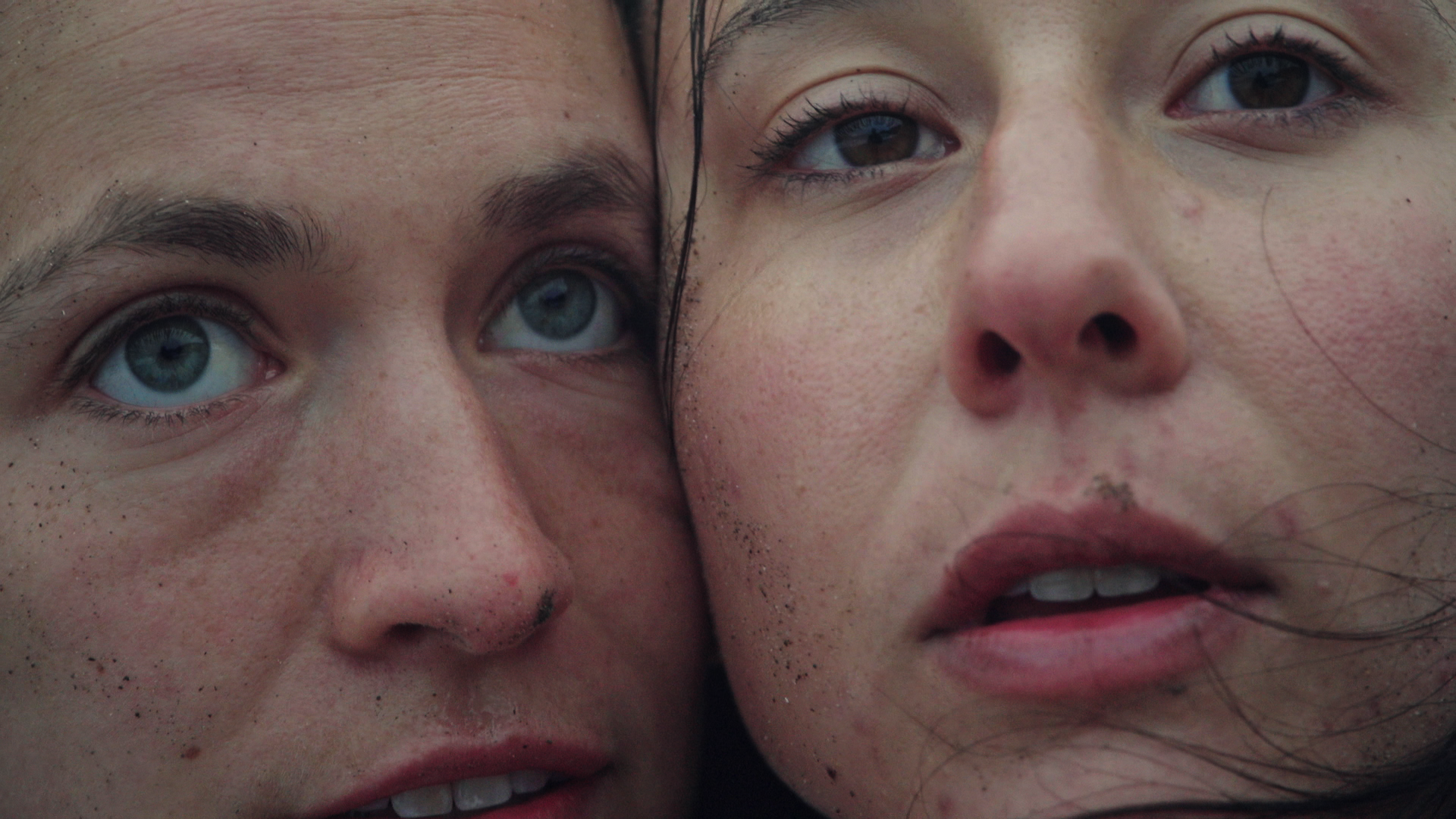Words by Maxine Flasher-Duzgunes.
Togetherness is irreplaceable. Its memory washes over us like waves, its palpability remains an insurmountable reminder of its loss. In Jake Stangel’s 2018 film ‘Mercury’, Fullstop Dance company members Kathryn Florez and Katie Meyers hold one another to the cannons of the incoming tides in the Marin Headlands. Two years later, they illuminate the inner-workings of their San Francisco-based dance collective amid the discords of a pandemic that over the past nine months has invariably shut the doors to dancing together.
Florez trained in the Lou Conti Dance Scholarship student programme at Hubbard Street Dance Chicago before moving to the Bay Area to attend the San Francisco Conservatory of Dance. There Florez founded Fullstop Dance, a repertory company whose vision has become focused on collaborating with artists from within and outside the city in the form of choreographic commissions, workshops, open rehearsals and Q&A sessions.
The company has presented work through Kristin Damrow’s Merde Project, David Herrera Performance Company and ODC Theatre, among others. “I’m a total sucker for a small, intimate space where you’re really close to people,” says Florez in reference to one of the company’s earliest performances at The Laundry, an art gallery-café in the city’s Mission District.
As a current Artist-in-Residence at Berkeley Ballet Theatre, Florez has been presenting her creative process through online work-in-progress showings, but like many dance artists she and Meyers struggle to approach screen time as an adequate substitute for being together. “I feel more present, more connected even if we’re not touching,” highlights Meyers on rehearsing in-person socially distanced. “I feel a bit more intact and in-tune with the people I’m working with and also with an audience.”

Meyers attended college in Portland before leaving to work at Northwest Dance Project. She studied the Gaga movement language in Israel with Vertigo Dance Company, and finally attended San Francisco Conservatory of Dance, where she met Florez. She emphasised the sheer amount of dance that is being viewed right now – while perhaps reaching more people, presenting dance via online mediums leaves a dancer not knowing who has watched them. Now even the livability of the performer seems to fade with what kind of digital container the choreographer decides to place them in. “I encourage anyone to notice for themselves what they feel watching online versus watching in person – I hope we don’t take our bodies out of the equation and just make it a visual thing,” Meyers says.
The company has engaged dance with film such that the performer does not recede inside the design or cinematography, but instead becomes the subject of an evolving space, and in it, a fearless one. Fullstop’s work for film often begins improvisationally and does not rely so much on changing the work for the lens; rather, it becomes an amalgamation of the two art forms in the process of creation. “[People] who are just as invested in what they are doing as what you are doing yield a really great result,” Florez says. One of their film collaborations, ‘D-brane’, with visual artist, Harvey Moon, culminated in the fusion of dance with live projection mapping and audio synthesis using a program called Touchdesigner – in fact, its synopsis highlights the importance of live creation. “I think in a lot of ways that makes it more authentic and organic,” remarks Meyers, working in the moment with what the artist captures as opposed to overplanning a result.
It’s also understandable, however, that despite the strength of virtual collaboration, being compelled to make a dance film is not one of Florez’s current pursuits. “I think I’ve come to terms with the balance of making space for people to just…move through all of the s*** that’s going on right now – and that room to hold people has to come into whatever balance there is of creating or showing something.” She and Meyers had started a duet as part of the residency program at SAFEhouse Arts in this very realm, of holding the emotional weight of other people, before the pandemic cancelled it. She hopes to one day expand it into an additional duet with company member Claire Fischer.
Regardless of physical circumstances, holding space has become a reason to come together. “I feel like I’m doing that constantly for myself and for everyone else in my life,” Florez explains. At the beginning of the pandemic, Florez was teaching multiple online improvisation classes a week. “[It gave] everybody a chance to process and not necessarily do your best,” Meyers pinpoints. “It’s much more about being together and acknowledging the mayhem that we’re going through.”

For Florez, staged works are about “having some language or base foundation you can work from and seeing where the artist can take it from there.” And by inviting outside artists to set new works on the company and teach open classes, she has established a tradition of collaboration that benefits everyone: “[If] the choreographer is newer, they’re getting their name out, they’re getting the opportunity to meet new people, to build a relationship with the space. So if they want to come back, they have the resources.”
Fullstop’s most recent watch parties invited local artists Kristin Damrow & Company and Kickbal Dance Company, and New York based Swiss artist Nicole Von Arx to show their work and host Q&A discussions, alongside Fullstop Dance. “I feel so strongly about the fact that you have to make things accessible for the larger community, and it’s not just doing shows. There’s so many other ways to touch people’s lives,” Florez says. During these screenings, the company set up a drive for artists who had lost work. “We made this giant Google spreadsheet and shared it outside of the arts community to those not impacted by Covid as much who could maybe pay artists to do other work, because no one is just a dancer, they have like five million other skills.”
Ultimately Florez has thrived from approaching the local dance scene entrepreneurially, by creating her own opportunities. Because “it shouldn’t be a disqualifying factor for building a network, that you can’t afford to go fly somewhere and spend several hundred dollars,” she articulates.
It’s unreasonable to expect that a dancer has $500 to pay for a 2-day workshop for access to rehearsals, workshops, and essentially, people. “[It’s about] looking at dancers more holistically and at every part of their life that you’re impacting.”
Meyers’ hope is that upon everyone’s safe return to dance spaces there can be more transparency, more equity, and less reliance on white-supremacist concepts and constructs. There’s a pressure inside the dance community to practice what is preached, to rethink decisions, directors, and hires. “[There’s] this idea that you pay your lighting designer or the tech people exponentially more than you pay your dancers,” says Florez. “I feel like people who have the tiniest bit of power running their organisation should create a higher standard.”
With the desire for a more egalitarian future comes a tomorrow where dance artists are necessary, touch occurs without question, and creation is beautifully improvisational. Fullstop Dance reminds us – as dancers and viewers of dance – to hold our environments and one another, but also to disrupt them and consider our humanness before giving it away. This moment in time is about becoming hopelessly lost and yet chaotically harmonious; it’s about exploring what you, as an artist, can become when something – something say foamy and salty and chilly and wet – overpowers you.
Header photo: Jake Stangel. Portrait image: Tamara Peña.
About the writer: Maxine Flasher-Düzgüneş is a recent BFA Dance graduate of NYU Tisch School of the Arts. She is currently researching the intersections of poetic techniques and movement through interdisciplinary collaborations with designers, animators, coders, poets, and dancers. Her score strikethrough #8 was recently published in the inaugural issue of samfiftyfour_literary, and an essay on this creative process first appeared in inbtwn. magazine. She uses choreographic scores to access textual sensibilities within movers, to find poems breathing in the origins of any dance.
Here is a link to the Dancers Group newsletter, a not-for-profit in the Bay Area that provides resources to performing artists in the community.
